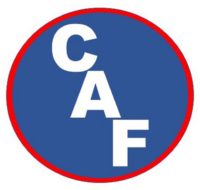or What to ask for from a builder (OEM)
If a department makes the decision to go CAF, the unit may
show up in any configuration. Below are a few tips for a department to consider
when asking for a unit. A department will have a much happier relationship with
their CAF machine if it is designed to meet the firefighters’ needs. Keep in
mind; the unit may be built by a non-firefighter. The builder may not understand
the firefighters’ needs.
- Water-Air
Valves – to put CAF through a hose line, both a water (solution) valve and
an air valve must be opened. The air valve should be in proximity to the
corresponding water valve for the appropriate discharge. Having a bank of
air valves located away from the corresponding water valves can cause
confusing during IA (Initial Attack) applications. - CAF
Switches – It is convenient to have the air control switches and the
concentrate control switches located in proximity to each other. - Red
Cover Switches – (often used for critical on-off functions) have been
located where they can be bumped into the off position accidentally when the
pump operator reaches for another switch or valve located above the red
covered switch. Make sure these switches are located where they cannot be
accidentally hit. - Pressure
Gages – The air and water gages are sometimes on the same gage (duplex
gage). Sometimes they are separate gages located remotely to each other.
Sometimes they are the same size and sometimes not. Think about this and ask
for what suits your department’s needs. - Hydraulic
Oil Sump – Site Glass – The compressor system on most units incorporates
a sump full of hydraulic oil as part of the compressor cooling system. The
oil level needs to be checked as part of the daily/weekly apparatus check.
Make sure the site glass is in a convenient, easy to see location.
Firefighters will not perform regular checks if it is difficult to do so.
Make sure the site glass is easily accessible, not blocked behind running
board equipment or blocked by other truck components. Having to remove the
entire side pump panel of the truck for a daily oil check is not conducive
to simplicity of design. - Proportioner
Oil – depending on the proportioning system, an oil reservoir may be
present. If so, it needs to be checked regularly. And similar to the
hydraulic oil site glass, it also needs to be easily accessible. Some
proportioners need periodic lubricating. Check to see where the builder
plans to face the grease zert – will you be able to get a grease gun hose
to the zert? Also, if there are other valves associated with the
proportioner, can they be easily reached and operated? - Filters
and Separators – have to be changed periodically and at least annually –
will this be a simple project or a major nightmare due to inaccessibility? - Access
Panels – Doors – discuss all the components with the builder (OEM) and
insure that all components are accessible either underneath the truck or
through adequate sized access panels. The harder it is to access; the least
likely it will receive proper care. - Auxiliary
Air Outlet – CAF units can have an air only auxiliary outlet. On some
units, the OEM will tie the auxiliary outlet to the apparatus air brake
system. Some manufacturers recommend minimum of weekly airflow checks
through the CAF system. Without the auxiliary air outlet plumbed to the CAF
system, a hose discharge must be utilized for the airflow check. Sometimes
the hose discharge outlet is difficult to access. The auxiliary air outlet
on the CAF system makes the airflow check a simple process. - Air
Inlet & trim Valves – {Warning: Firefighters should not make any CAF
system adjustments unless properly trained to do so!!!} Occasionally, the
air inlet or trim valves must be adjusted. It is recommended that this be
done only under a trained mechanic’s supervision. The adjustments need to
be made while the system is operating. Are these valves accessible for such
a maneuver? Sometimes, these valves are placed in proximity to the
compressor drive shaft, making them impossible to reach safely while the
system is operating. They should be located away from drive shafts. - Concentrate
Clean Out Screen and Heat Exchanger Clean Out Screen – these two clean out
screens are a part of most CAF systems and must be checked regularly and
should be easily accessible. The heat exchanger cleanout screen might need
to be accessed during pump operations – is this located in a place safe to
do so? - Pump
Panel Design – consider where everything is located on the pump panel.
Will it be a smooth, simple process for the system operator, or will it
require the operator to bounce around the panel to make the system flow
smoothly.
Other Considerations:
How many outlets should have CAF?
It will depend on the number of CAF lines needed at any one
time and the size and capability of the system. A small slide-in CAF unit may be
capable of supplying one hand line. A 200 cfm unit on a Type 1 (NWCG) structure
engine can usually supply 4 outlets plus the auxiliary air outlet and a deck
gun.
What System Types are available?
Systems come in all types, including stored energy, pump
mounted, PTO, and auxiliary engine driven systems (see
links to manufacturers to see who builds what). The system type will be
based on the individual department’s needs. Photos coming soon!!!
What System Options are Available? – Information
Coming Soon!!!
Quality vs. Economy – Coming Soon!!!
Customer Service – Check with the
manufacturer for things like tech support, warranty, finance options,
installation (especially for slide in units and retro-fits), and operational
instructions – how do we operate this unit (links)
compressedairfoam.com – a Division of LongBear,
LLC (www.LongBear.com)

































